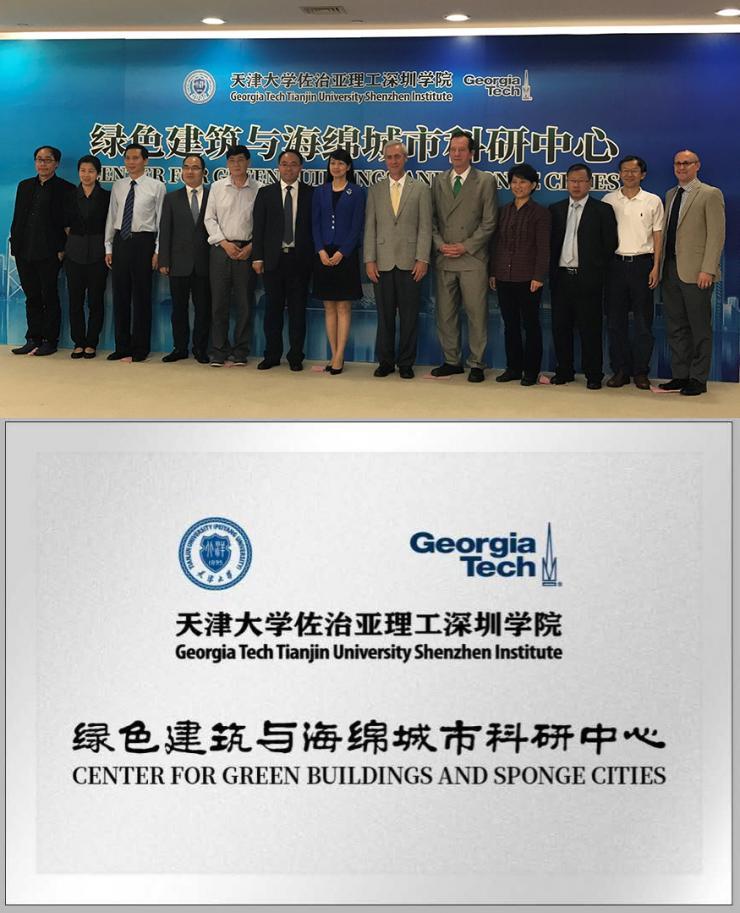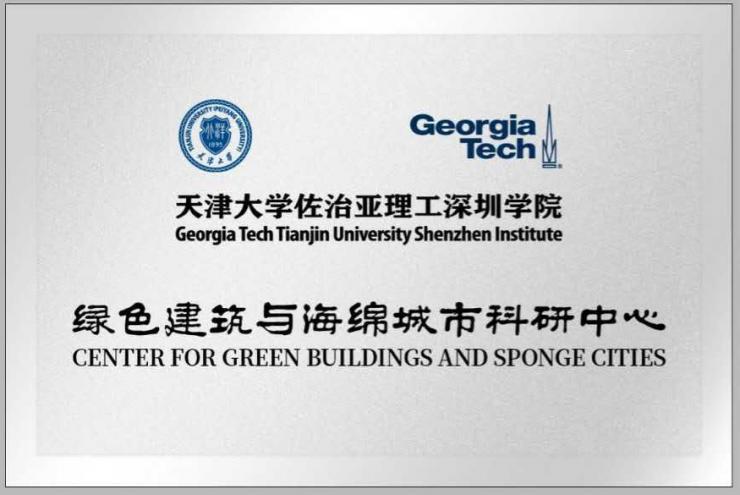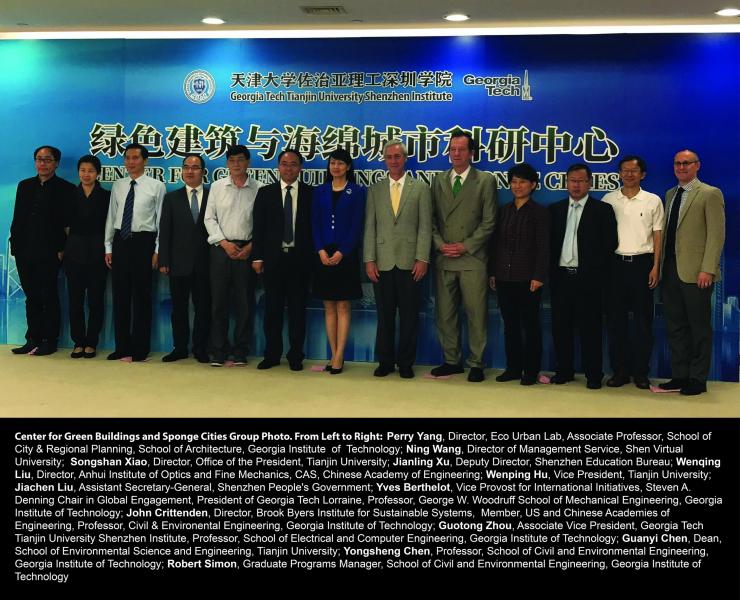Georgia Tech Tianjin University Shenzhen Institute Launches Research Center for Green Buildings and Sponge Cities in Shenzhen, China
Jun 06, 2017 —

The Georgia Tech Tianjin University Shenzhen Institute has launched a new research center to study, and teach about, sustainable urban infrastructure. The Center for Green Buildings and Sponge Cities will be located in the forthcoming Georgia Tech satellite campus that is being planned in the city of Shenzhen, near Hong Kong. The new center, as well as the Georgia Tech Tianjin University Shenzhen Institute are elements of a partnership between the Shenzhen Institute of Science and Technology of the Chinese Academy of Sciences, Tianjin University, and the Georgia Institute of Technology. Professor John Crittenden, Director of Georgia Tech’s Brook Byers Institute for Sustainable Systems, has been advocating for the establishment of the center. He says, “Urban infrastructures are the largest systems in which humans manipulate matter and energy. Accordingly, creating more sustainable infrastructure will have a significant impact on creating a more sustainable future. China has experienced incredibly rapid infrastructure development, and is likely to continue doing so. It is heartening to see that China is committing to study a win-win scenario, where urban infrastructure development can create greater wealth and comfort while simultaneously reducing material and energy use.”
Professor Hu Wenping, Vice President of Tianjin University, Prof. Yves Berthelot, Georgia Institute of Technology Vice Provost of International Initiatives, Ms. Liu Jiachen, Deputy Secretary-General of Shenzhen Municipal People's Government attended the launch ceremony. Professor Crittenden, Chinese Academy of Engineering Professor Liu Wenqing and other experts, scholars, and business representatives were also in attendance. The launch ceremony was chaired by Prof. Chen Guanyi, Dean of the School of Environmental Science and Engineering of Tianjin University.
The new research center is the first initiative of an educational collaboration amongst Georgia Tech, the city of Shenzhen, China, and Tianjin University that was set into motion in December of 2016. Once built, the new building will house the Georgia Tech satellite campus, as well as the new research center. Degree programs on offer through the new campus will include electrical and computer engineering, computer science, industrial design, environmental engineering, and data analytics. Georgia Tech will coordinate the graduate programs at the specialized institute. Tianjin University, China’s oldest university, will coordinate the undergraduate programs. The agreement that established the Georgia Tech Tianjin University Shenzhen Institute provides for the future establishment of additional research centers in signal processing and data analytics, wearable technologies, printed electronics, and advanced telecommunications.
In his remarks, Professor Hu Wenping said that the expertise represented by the partner institutions will lay a solid foundation for training the next generation of professionals to properly design for the coming economic, social, and ecological challenges ahead. Preparations for the construction of the new center represent an important milestone in the scientific research into green buildings and sponge cities performed thus far, not only by experts in China, but also by experts from the United States. Once built, the new center will embody the state of the art in the subjects. It will not only serve as an exemplar that will address the future development needs of the city of Shenzhen, but can also serve as a global example of how sustainable development can be accomplished.
Georgia Tech Vice Provost Yves Berthelot said that, “The new facility in China is an important part of Georgia Tech’s international strategy. It is an exciting opportunity for Georgia Tech to have a presence in one of the fastest-growing technological centers in China. That, combined with the partnership with Tianjin University, will result in a great benefit to all the students and faculty involved.” Areas of expertise that Georgia Tech will bring to bear to the Research Center for Green Buildings and Sponge Cities will be green buildings and environmental engineering; signal processing and data analytics; and wearable, printable electronics and advanced telecommunications.
After the opening ceremony, Professor John Crittenden, a member of both the American and Chinese Academies of Engineering, proposed a research agenda for the new center. Two corporate partners, Shenzhen Architecture Scientific Research Institute Co., Ltd., and Dongjiang Environmental Protection Co., Ltd., along with other business representatives provided their enterprise outlook and offered their support and cooperation in the endeavor. The event concluded with a visit to the site of the new facility.


Brent Verrill, Communications Manager, BBISS




